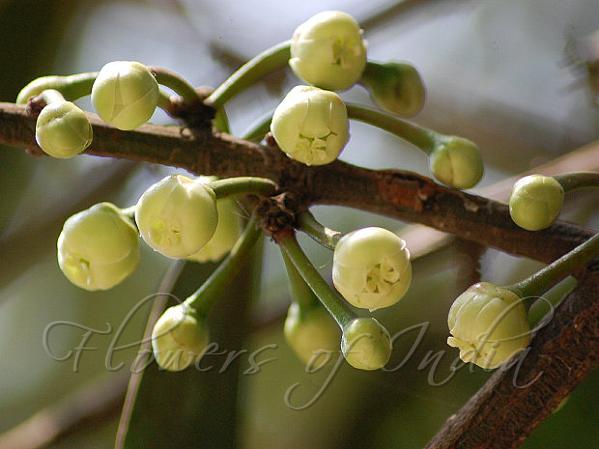|
| Himalayan Garcinia |
|

|

| File size | 80381 |
| Original date | 4/2/12 2:21 PM |
| Resolution | 620 x 465 |
| Flash | Flash did not fire, auto |
| Focal length | 300.0mm |
| Exposure time | 1/320s |
| Aperture | 5.6 |
| Focus Distance | |
| Metering Mode | Multi-segment |
| Camera make | NIKON CORPORATION |
| Camera model | NIKON D40 |
| Sensor type | OneChipColorArea |
|
|
|
|
Photo: |
Botanical name: Garcinia xanthochymus Family: Clusiaceae (Garcinia family)
Synonyms: Garcinia pictoria, Garcinia tinctoria
Synonyms: Garcinia pictoria, Garcinia tinctoria
Himalayan Garcinia is a small evergreen tree reaching up to 15 m in height,
with a short, straight trunk, more or less horizontal branches and a
dense, pyramidal crown. Leaves are narrowly oblong, 12-24 cm long. Flowers
arise in leaf axils in groups of 4-8. Flowers are about 2 cm, with 5 gree
sepals and 5 white petals. Fruits are round, pointed, up to 9 cm in
diameter, pale orange to dark yellow. The fruit is edible, it has a
pleasant acid taste and is mainly used as a breakfast fruit. It is also
used for jam, curries and vinegar. The latex is sometimes used in dying.
Himalayan Garcinia is found in East Himalaya, Peninsular India, China and SE Asia.
Medicinal uses: Seeds are traditionally prescribed in piles, dysentery and
intestinal disorders.
Seeds are traditionally prescribed in piles, dysentery and
intestinal disorders.
Medicinal uses:
 Seeds are traditionally prescribed in piles, dysentery and
intestinal disorders.
Seeds are traditionally prescribed in piles, dysentery and
intestinal disorders.
| Identification credit: Satish Pardeshi | Photographed at Jijamata Udyan, Mumbai. |
• Is this flower misidentified? If yes,